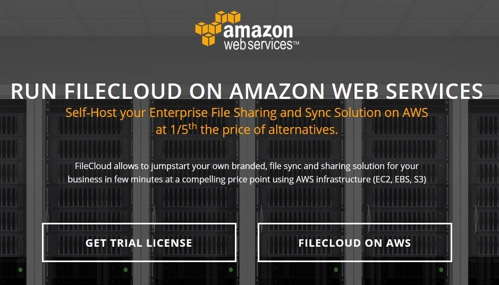CodeLathe FileCloud for AWS
For businesses to create own branded file storage solution
This is a Press Release edited by StorageNewsletter.com on December 17, 2014 at 2:49 pmCodeLathe LLC announced FileCloud for Amazon Web Services (AWS).
The availability of FileCloud for AWS will allow businesses to host FileCloud in the Amazon cloud infrastructure.
Customers will experience flexibility and total control of FileCloud,
as well as scalability and reliability of AWS.
FileCloud is a self-hosted file sharing, sync, and mobile access solution for small-to-large businesses. By using FileCloud and AWS’s infrastructure (EC2, EBS, S3) businesses can create their own branded file storage solution (complete with company logo and domain) in a few minutes at a compelling price point. FileCloud client apps are available for all major desktop and mobile operating systems including Android, iOS, Linux, Mac, Windows, and Windows Phone 8.
Self-Hosted enterprise file share and syncSolution FileCloud
available via AWS marketplace
FileCloud provides users with secure access, file sharing, and sync from anywhere. It provides endpoint backup, data leak prevention (DLP), and HIPAA compliant auditing. It can be run under any domain, and customized to reflect your organization’s brand.
Its capabilities are:
- ability to monitor information;
- prevent and fix data leakage; and
- assure corporate data is protected across all devices (including laptops, desktops, smartphones, and tablets).
“In contrast to managed public cloud enterprise file share and sync offerings, FileCloud hosted on Amazon infrastructure provides the best of two worlds: the complete control, flexibility, data separation and customization of FileCloud; and the scalability, resiliency of the AWS infrastructure. Further, FileCloud costs only 25$/user/year, which is 20% of the price of other managed EFSS offerings.” said Madhan Kanagavel, CEO, CodeLathe.
AWS is a collection of remote computing services, also called web services, which make up a cloud-computing platform. AWS was founded in 2006, and operates in 11 geographical data centers, or regions, around the world. The data centers, also known as availability zones, operate independently to prevent outages from spreading between the zones. Data and services stay within specific regions.















 Subscribe to our free daily newsletter
Subscribe to our free daily newsletter

